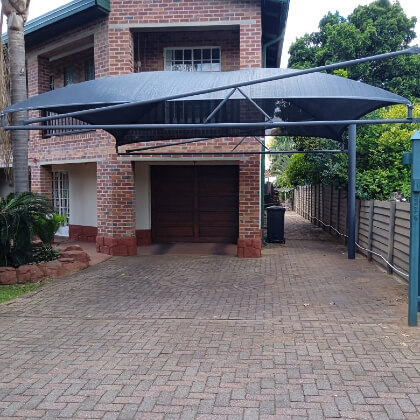
Many homeowners wonder if a shadeport can be placed on top of paving or tiles, especially when they want to preserve the look of their outdoor space. Understanding how to secure this type of structure is crucial for ensuring long-term stability.
In this article, we explore the essential considerations around installation on hard surfaces, covering preparation, anchoring methods, and upkeep. By the end, you’ll have a clearer picture of what goes into placing a functional and attractive shade covering.
Assessing the Ground and Site Preparation
Before you begin, it’s vital to gauge the condition of your existing surface. Pavers, concrete blocks, and tiles vary in thickness and stability, which affects anchoring. A quick inspection helps identify uneven or loose sections that might need attention. This step can prevent shifting and ensure your canopy remains securely in place.
One question that arises often is: Is it feasible to place a shade canopy on paved or tiled surfaces? The short answer is yes, if the substrate is robust. Properly laid materials with a stable foundation can offer enough support for the posts. It’s important to confirm that adhesives or the base material are still intact, as this ensures the entire setup remains secure once the overhead covering is added.
Measuring the intended post positions is another crucial step. Overlapping seams between tiles or pavers can disrupt drilling alignment, so address these gaps first. In some cases, removing a single unit to create a direct footing into concrete proves more reliable. By checking these details early on, you lay the groundwork for a smooth shadeport installation over firmer surfaces.
Securing Posts and Ensuring Structural Integrity
Once the site is prepared, the next step is to anchor the support posts effectively. This involves drilling precise holes through the paving or tiles and into the concrete foundation beneath. Using high-quality bolts or chemical anchors can greatly enhance grip, especially if you are installing a shade structure over areas with existing tiling or paving. The depth of these fasteners depends on the thickness of the substrate, so take accurate measurements to avoid under or over-penetration.
For added stability, it’s common to use reinforcing sleeves or epoxy resin around the post brackets. This extra layer helps the hardware bond securely with the concrete, compensating for any minor irregularities in the surface. If you discover that some pavers or tiles are not level, adjusting or re-laying them before bolting can reduce stress on the structure. Ensuring that everything is well-aligned significantly cuts down on potential wobbling or loosening over time.
Another key factor is post spacing. The distance between each upright should match guidelines provided by the design, which often account for wind loads. Placing supports too far apart can stress the canopy center, while positioning them too close might reduce shade coverage. Striking the right balance boosts overall structural integrity.
Maintenance Tips for Shadeports on Different Surfaces
Once the structure is up, proper maintenance can extend its lifespan. Regularly check for any structural changes in the paved or tiled surface, such as cracks or loosened edges. Although these surfaces are designed to handle normal foot traffic, the additional stress of posts and overhead material can cause minor shifts over time. Monitoring these details helps prevent small issues from turning into bigger problems.
Cleaning the canopy and the posts is another crucial aspect. Accumulated dirt and debris can weigh down the fabric and place unnecessary strain on fasteners. In regions with heavy rainfall, make sure water drains properly down the sides and doesn’t pool on the surface. The approach for adding a shade covering on top of a paved or tiled spot often includes planning for adequate drainage, so stay mindful of this to keep your setup in good condition.
Finally, periodic inspections of the anchoring hardware are advisable. Check the bolts for signs of rust or looseness, and tighten connections as needed. A simple maintenance routine—performed every few months—will help you catch any potential issues early. If everything is kept in good shape, you can enjoy the benefits of your overhead shelter without worrying about damage to the surface below.
In Conclusion
Installing a canopy on paving or tiles is completely achievable, as long as you prepare the site correctly and secure your posts with reliable hardware. By inspecting the surface, using proper anchoring techniques, and performing regular maintenance, you can ensure a stable shadeport that protects your outdoor areas for years to come.
If you want professional guidance, our team at Mike Shades is ready to help. Get a free quotation and let us assist you in creating a durable shade solution that complements your property while providing essential sun protection.

Mike Shades is an experienced shade netting specialist with over 13 years of expertise in manufacturing and installing high-quality shade structures. His dedication to providing cost-effective solutions with a 10-year warranty on materials reflects his commitment to excellence. Based in Gauteng, Mike’s innovative designs cater to various needs, ensuring top-notch service and unbeatable prices.



